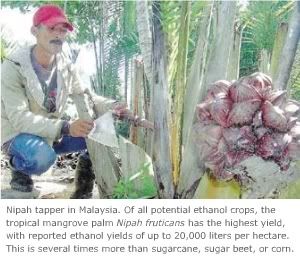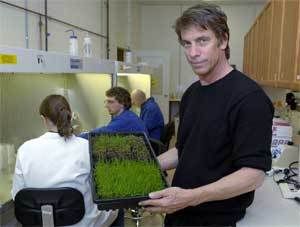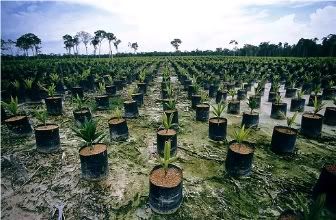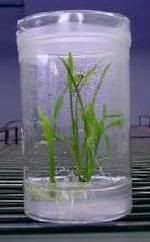Malaysian company to produce ethanol from Nypa fruticans
 Several years ago, we started studying the use of a mysterious mangrove palm, called Nypa fruticans, for the production of ethanol. Meanwhile, we have been cooperating with a Nigerian NGO, located in the volatile Niger Delta, where the palm thrives and is seen as an invasive species. The goal of the project is to find ways to build a locally rooted ethanol industry around the crop, involving delta-communities who live in dire poverty. Earlier, we reported on the mysterious crop in an introductory article.
Several years ago, we started studying the use of a mysterious mangrove palm, called Nypa fruticans, for the production of ethanol. Meanwhile, we have been cooperating with a Nigerian NGO, located in the volatile Niger Delta, where the palm thrives and is seen as an invasive species. The goal of the project is to find ways to build a locally rooted ethanol industry around the crop, involving delta-communities who live in dire poverty. Earlier, we reported on the mysterious crop in an introductory article.Nypa fruticans, also known as nipah, attap chee or the mangrove palm, is classified as an 'underutilized' crop, relatively unknown and lacking research, even though it has been used for ages in the tropics by mangrove communities. These communities tap the palm in a skillful manner to extract vast quantities of sugar-rich sap, that is used to make wine and vinegar. The leaves, fruits, stems and fibres of the palm are used for a variety of other purposes.
Very-high yields
The secret of nipah is its incredibly high sugar-rich sap yield, as it has been observed by several researchers. Fermented into ethanol, the palm's large amount of sap allows for the production of 15,000 to 20,000 liters of the biofuel per hectare (compare with sugarcane at 5000-8000 liters, or corn, at 2000 liters). And it does so on a continuous basis, year round, for up to 50 years. Typical for an underutilised crop from the tropics, nipah research is scarce and there have been very few plant-breeding attempts.
In a for us very interesting announcement, we learn that a Kuala Lumpur-based company, in coordination with local authorities and the state government, is going to utilize nipah as a feedstock for commercial ethanol production in Perak, Malaysia. A world's first. Nipah has a much higher yield per hectare than corn, sugar beets or sugarcane, says Perak Menteri Besar Datuk Seri Tajol Rosli Ghazali - local municipal chief.
"If we were able to produce ethanol from 110,000ha of nipah, it would be enough to satisfy the world’s [current ethanol] demand," he says:
 ethanol :: biomass :: bioenergy :: biofuels :: energy :: sustainability :: Nypa fruticans :: nipah :: mangrove palm :: Malaysia ::
ethanol :: biomass :: bioenergy :: biofuels :: energy :: sustainability :: Nypa fruticans :: nipah :: mangrove palm :: Malaysia :: He added that a project to produce ethanol would mean additional jobs, with nipah tappers earning between 3,000 and 4,000 (€635-845/US$845-1125) each a month.
The state government, after studying a proposal from the company, agreed to allow it to extract "nira" or nipah sap from 10,000ha of palms along the state’s coastal area. Tajol Rosli said the state would also allocate 400ha of land in Perak Hilir district for a refinery.
"The company would be using home-grown technology to produce the ethanol after having discovered and patented a way to preserve the sap for up to three days instead of the usual six hours," he added.
He also said the company would begin construction of its refinery in April, which would be completed within a few years at a cost of between RM200 million and RM300 million (US$56-84 million).
We will be following these developments closely. Nipah grows in several developing countries where it has colonized thousands of hectares of mangroves and riverbeds. Exploiting this existing resource for ethanol production in a sustainable way may be a great strategy to provide extra income to mangrove communities, who often live in poverty.
Article continues
 -------------------
-------------------
 Spanish company Ferry Group is to invest €42/US$55.2 million in a project for the production of biomass fuel pellets in Bulgaria.
The 3-year project consists of establishing plantations of paulownia trees near the city of Tran. Paulownia is a fast-growing tree used for the commercial production of fuel pellets.
Spanish company Ferry Group is to invest €42/US$55.2 million in a project for the production of biomass fuel pellets in Bulgaria.
The 3-year project consists of establishing plantations of paulownia trees near the city of Tran. Paulownia is a fast-growing tree used for the commercial production of fuel pellets.

 Li said methanol’s future as an alternative fuel in China remains uncertain. Used largely as a raw material in the manufacture of products such as resins, plastics and paints, experts have cited methanol’s considerable potential when blended with gasoline due to its comparatively low cost.
Li said methanol’s future as an alternative fuel in China remains uncertain. Used largely as a raw material in the manufacture of products such as resins, plastics and paints, experts have cited methanol’s considerable potential when blended with gasoline due to its comparatively low cost. Unlike methanol, ethanol is a fuel for which clear official policies and targets exist. “China targets to use ethanol-blended gasoline for 75% of its total gasoline demand by 2010, or around 50 million metric tons out of 70 million tons,“ says Li, who is also the deputy director of the Institute of New Energy Technology under Tsinghua University:
Unlike methanol, ethanol is a fuel for which clear official policies and targets exist. “China targets to use ethanol-blended gasoline for 75% of its total gasoline demand by 2010, or around 50 million metric tons out of 70 million tons,“ says Li, who is also the deputy director of the Institute of New Energy Technology under Tsinghua University: Albert Kausch, a University of Rhode Island plant geneticist, is
Albert Kausch, a University of Rhode Island plant geneticist, is 
 The
The 







Tuesday, December 05, 2006
When energy blogs get serious: Ethablog cooperates with former agriculture secretary
Ethablog is such an information source. Maintained by Henrique Oliveira, the blog tracks the developments in Brazil's dynamic ethanol industry. It is the only source in English to do so. Oliveira has the advantage of knowing the sector from within and of being able to switch between a Brazilian and an American context (the author is a Brazilian MBA student at the University of Michigan). This allows him to get exclusive and in-depth interviews from key players in the Brazilian ethanol market, which he can publish in full -- something 'real journalists' can only dream of. No wonder then that news agencies and traditional media do not hesitate to have a peek at what Oliveira writes. Texts from Ethablog have ended up in American newspapers -- but not a trace of any copyright or credits, though...
Henrique is now taking it a step further. He just announced that his blog is getting the support of Milton Maciel, a former Secretary of Agriculture of the state of Alagoas, in northeastern Brazil. Besides being a former official who helped craft and implement Brazil's ethanol policies, Mr Maciel is a consultant, an autority on organic farming and author of more than ten books. So this is how things go in the blogosphere: a young student devotes a lot of his time on writing a smart energy blog and leaves an impression on a wise old man with 'real world' experience in the sector who decides to lend a helping hand and some of his authority and credibility. I'm sure journalists will mention their sources next time when they write a piece on Brazilian ethanol... Well done Henrique!
Article continues
posted by Biopact team at 11:04 PM 0 comments links to this post